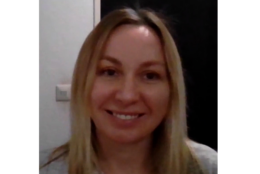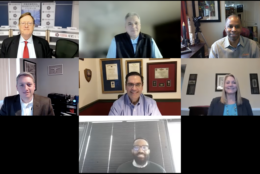SDFM The Business of Defense
-
It’s easy to make digital transformation about the technology. After all, “digital” is in the phrase. But IT should never be the sole focus, says Akamai’s Dave Zukowski. He shares why and how to emphasize outcomes during the DoD Cloud Exchange.
March 24, 2022 -
Dr. Voloshyna tells Conversations on Health Care hosts Mark Masselli and Margaret Flinter that she and her daughter had to sleep on the subway station floor for a week, and their lives are still interrupted by air sirens. She says the Russians have “criminally interrupted” the Ukrainian way of life.
March 24, 2022 -
A modern U.S. military requires a resilient, data-driven ecosystem that can flex at scale. We learn about the microservices, containerization and secure APIs necessary to make that happen from Leidos’ Derrick Pledger during the DoD Cloud Exchange.
March 23, 2022 -
The Defense Department is shifting to a multi-cloud environment as it looks to adopt artificial intelligence and machine learning. But with the private sector hording so much technology talent, former Navy CIO Janice Haith, now at Oracle, sees the need for a lean, but multifaceted government workforce.
March 23, 2022 -
Cyberthreats increased dramatically following the Russian invasion into Ukraine. Given that, DoD continues to work on zero trust and containing its threat surface as it expands cloud use, explains Veritas’ Bill Harrod during the DoD Cloud Exchange.
March 23, 2022 -
Balancing current requirements and long range planning in a dynamic environment is an ongoing challenge under the Defense Department’s PPBE process.
March 22, 2022 -
Despite the scattered arrangement of State Department employees around the world, going to a remote and hybrid work environment during the pandemic was less challenging than IT officials expected.
March 22, 2022 -
Tracking cloud-only consumption at the portal is relatively easy, but how can DoD account for costs as data moves from the cloud to on premises and back again? Find out more in our discussion with Veritas’ Mike Malaret during the DoD Cloud Exchange.
March 22, 2022 -
In February 2021, a massive storm spread wintry precipitation from Texas to Maine and ninety million people in 19 states were impacted. When it comes to disasters, in a large state like Texas, few things are more important than close relationships between emergency responders.
March 21, 2022 -
By building on its use of DevSecOps, DoD can take advantage of technologies that lead to applications that are “secure by design,” explain IBM leaders at the DoD Cloud Exchange. Find out why containerization and microservices are on the horizon too.
March 21, 2022 -
How does the Defense Innovation Unit (DIU) execute on its critical mission? What is it doing to attract innovative businesses and startups to help solve high-impact national security issues? What emerging technologies offer the most promise to securing the nation? Join host Michael Keegan as he explores these questions and more with Michael Brown, Director, Defense Innovation Units (DIU), U.S. Department of Defense.
March 21, 2022 -
Conversations on Health Care hosts Mark Masselli and Margaret Flinter welcome Project HOPE’s CEO Rabih Torbay and Director of Emergency Response and Preparedness Tom Cotter, who joined the show from the field in Bucharest, Romania. They share the daunting task of providing extensive support and local training to the existing medical infrastructure in handling both the destruction of medical facilities within Ukraine and the millions of refugees in need of medical and behavioral health services as they arrive in neighboring countries. “These people have all experienced trauma,” Cotter said. They are training local laypersons in Psychological First Aid techniques to help the refugees transition to safety. Project HOPE is also keeping supply lines going into Ukraine with desperately needed medical supplies. “Even if this conflict ended tomorrow, the destruction will take years to rebuild,” Torbay said. They expect to be assisting in the region for a long time. And they continue to provide medical support in 30 countries around the world dealing with COVID-19, famine, and military conflict, with a particular focus on women and children’s health.
March 21, 2022 -
Given new mobile device reporting and logging requirements, agencies essentially need the IT equivalent of a network MRI. Here’s a primer on what you must track to meet the latest reporting requirements from CISA, OMB and the White House.
March 18, 2022 -
During this webinar, you will learn how federal IT practitioners from the General Services Administration, Army Corps of Engineers, Department of Homeland Security, Cloudera, Quest Software and Snowflake are implementing strategies and initiatives around data center and cloud optimization.
March 18, 2022 -
Sensors gather the data on the battlefield. Information systems like AI and machine learning process that data faster, for better decision making. But what’s talked about far less often is the infrastructure that connects them.
March 18, 2022















